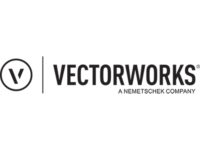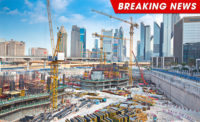MICHIGAN CITY, Ind. - Architects, building owners and specifiers looking for ways to create more eco-friendly structures are turning to Kalzip roof and cladding systems.
MICHIGAN CITY, Ind. - Architects, building owners and specifiers looking for ways to create more eco-friendly structures are turning to Kalzip roof and cladding systems. Whether the goal is to qualify a building for certification under the USGBC’s LEED standard or simply to use these guidelines to make a more energy and environmentally sound building, Kalzip can help accumulate points in at least three of the six categories in LEED New Construction, version 2.2. These include: Sustainable Sites, Energy and Atmosphere, and Materials and Resources.
Of the total 14 possible points in Sustainable Sites (SS), the use of Kalzip Nature Roof can reduce the impact of storm water and help accumulate a point in SS Credit 6.1: Storm water design; quantity control. Nature Roof is a vegetative or green roof that can retain water and reduce run-off to dramatically reduce drainage needs and water storage requirements at the site. Kalzip standing seam roofing and Kalzip perforated facades can also help gain points in SS Credit 7.1: Heat Island Effect, Non-roof, and SS Credit 7.2: Heat Island Effect: Roof. For example, Kalzip standing seam roofing can be supplied with a painted surface that achieves the required Solar Reflectance Index (SRI) of 29, or in a natural stucco embossed finish, which has an SRI of 76 when new and 35 when weathered. If covered parking areas are used to reduce the heat island effect, Kalzip perforated facades can provide a wall covering that also offers natural ventilation.
In the Energy and Atmosphere (EA) Category, Kalzip offers more than one option to accumulate credits. Kalzip roofing and cladding systems can help improve thermal performance of the building envelope by achieving better U-values. Kalzip systems can achieve U-values as low as 0.016 Btu/h.ft2.F (0.09 W/m2K).
The use of vapor control layers and correct detailing at junctions, perimeter and penetrations can also help meet air tightness requirements as outlined in EA Credit 1 – Optimize Energy Performance. To earn points for EA Credit 2 – On-Site Renewable Energy, designers and specifiers can use a variety of Kalzip solar photovoltaic solutions. These include, Kalzip AluPlusSolar, an aluminum standing seam roof system with fully integrated solar PV cells; Kalzip SolarClad; a flexible PV laminate bonded to aluminum fabric that can be mounted on any of the Kalzip aluminum standing seam roofing systems; and PV panels clamped to Kalzip standing seam roofing. These framed PV modules can be mono-crystalline, poly-crystalline or amorphous silicone.
Kalzip’s recycled content and recyclability also help earn credits in the Materials and Resources (MR) category, which deals with construction waste and recycled content. Kalzip standing seam panels are predominantly made from aluminum alloy, which contains a mix of post-consumer and pre-consumer scrap as well as primary ingots, which can help earn credits for recycled content. Kalzip panels also can be recycled. Individual panels can easily be removed from an existing building with the Kalzip unzipping machine, which is designed to keep all panels in tact in the removal process. Additionally, the new Kalzip FC façade system allows single panels to be easily removed without compromising adjoining panels.
These are but a few of the examples of how Kalzip can be used to improve energy efficiency and environmental aspects of buildings. Kalzip technical experts are available to help identify other options for achieving these goals with Kalzip.
Kalzip Systems Help Contribute Points to Green Standards
Looking for a reprint of this article?
From high-res PDFs to custom plaques, order your copy today!





